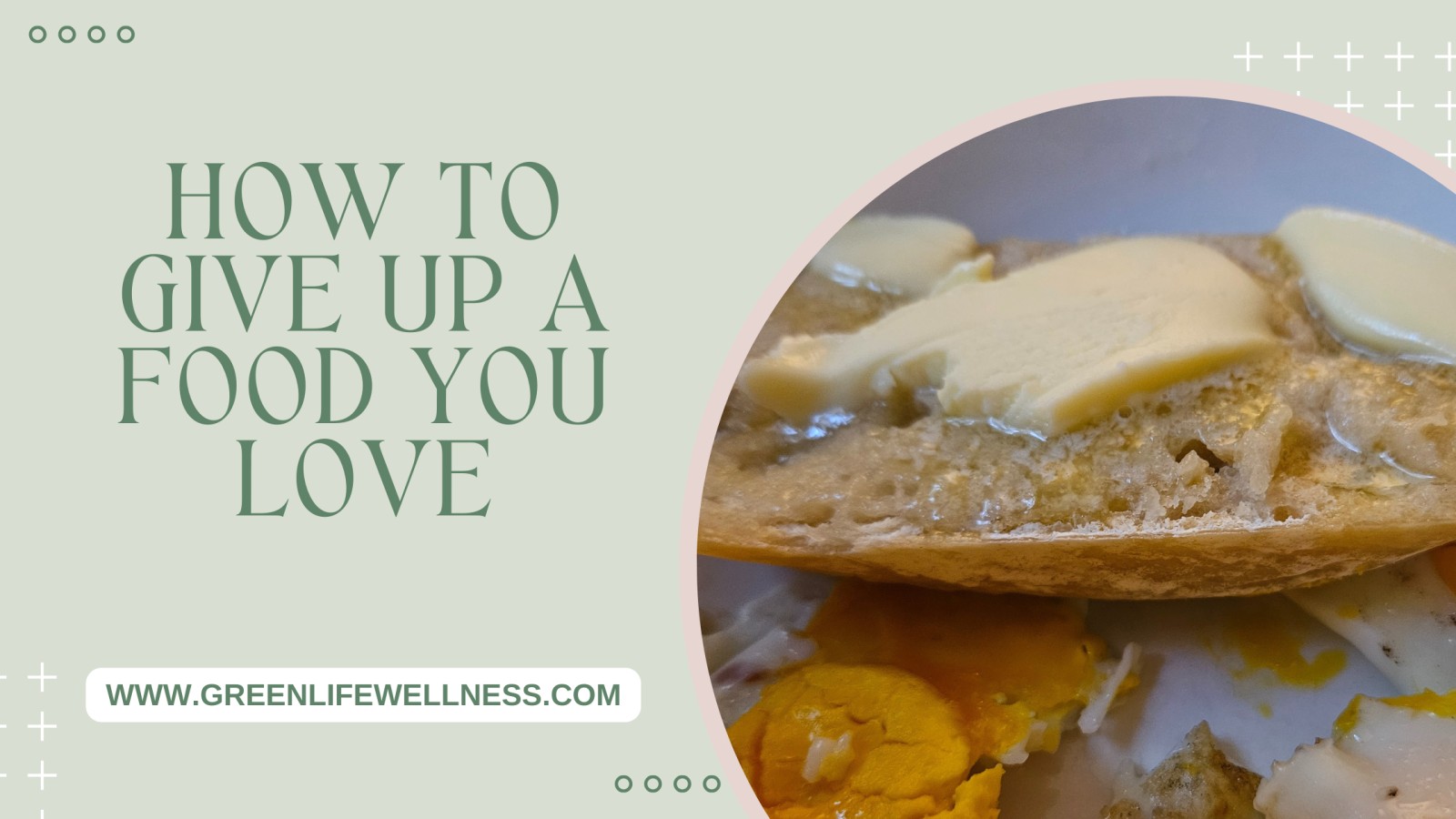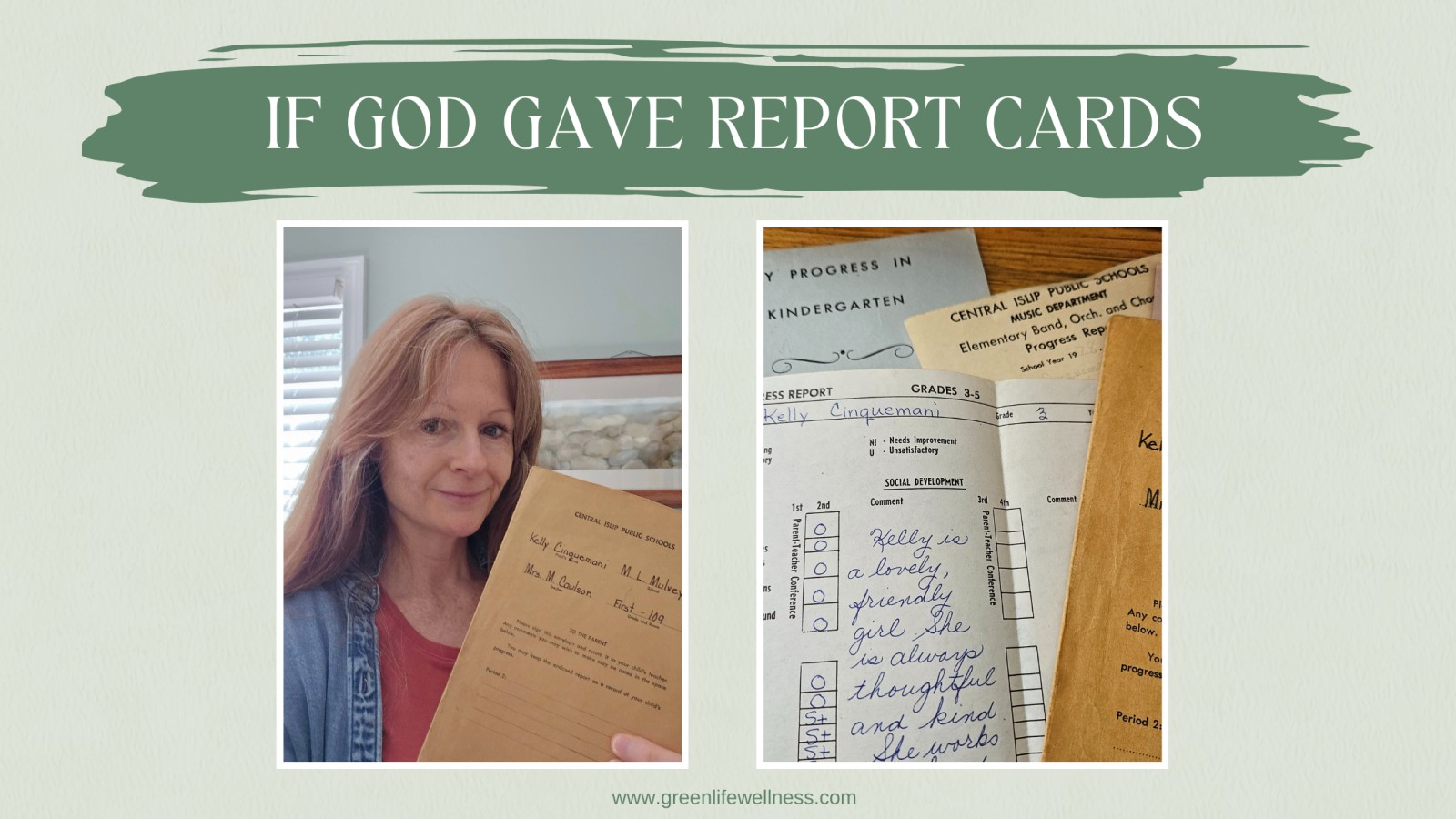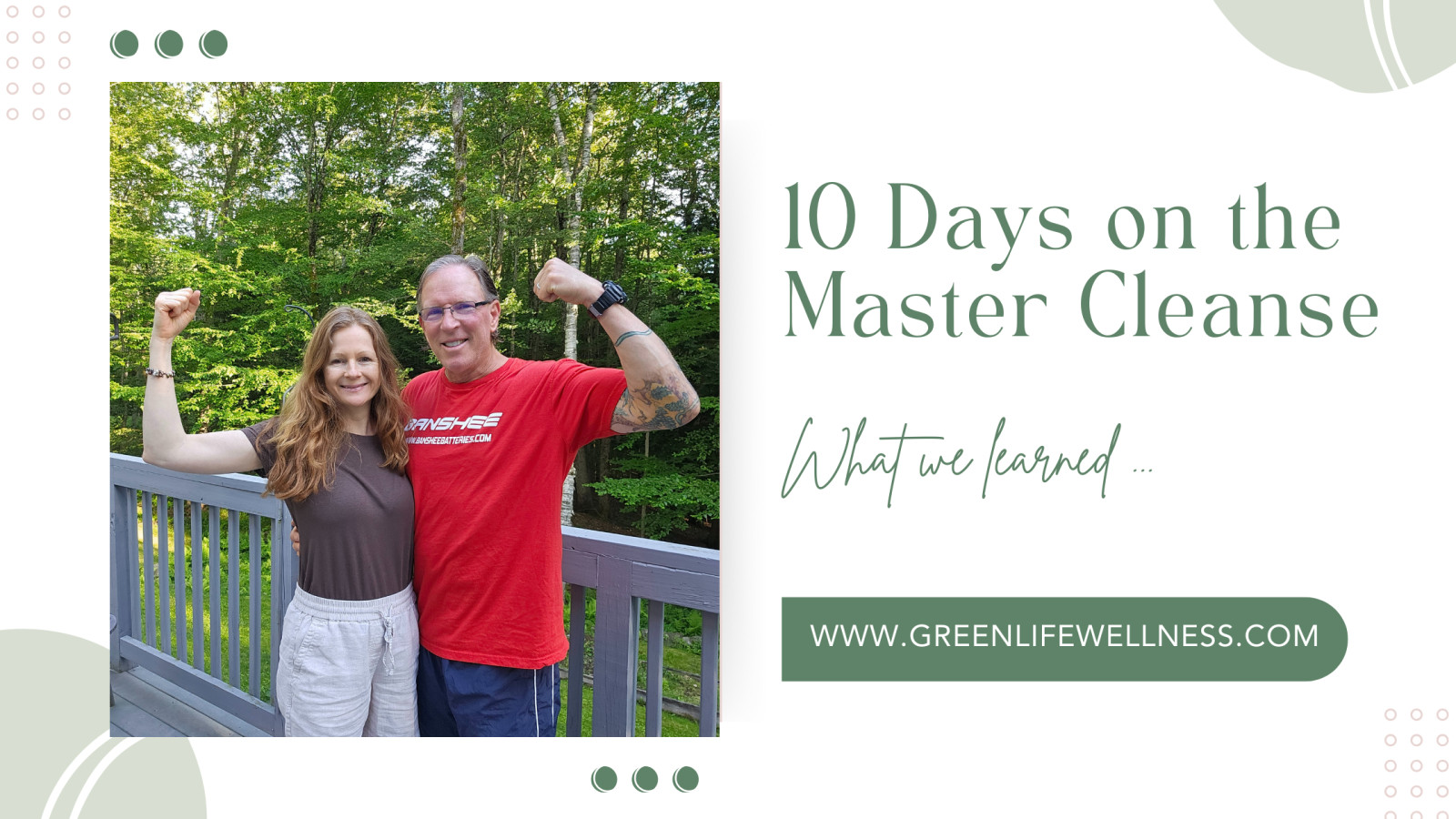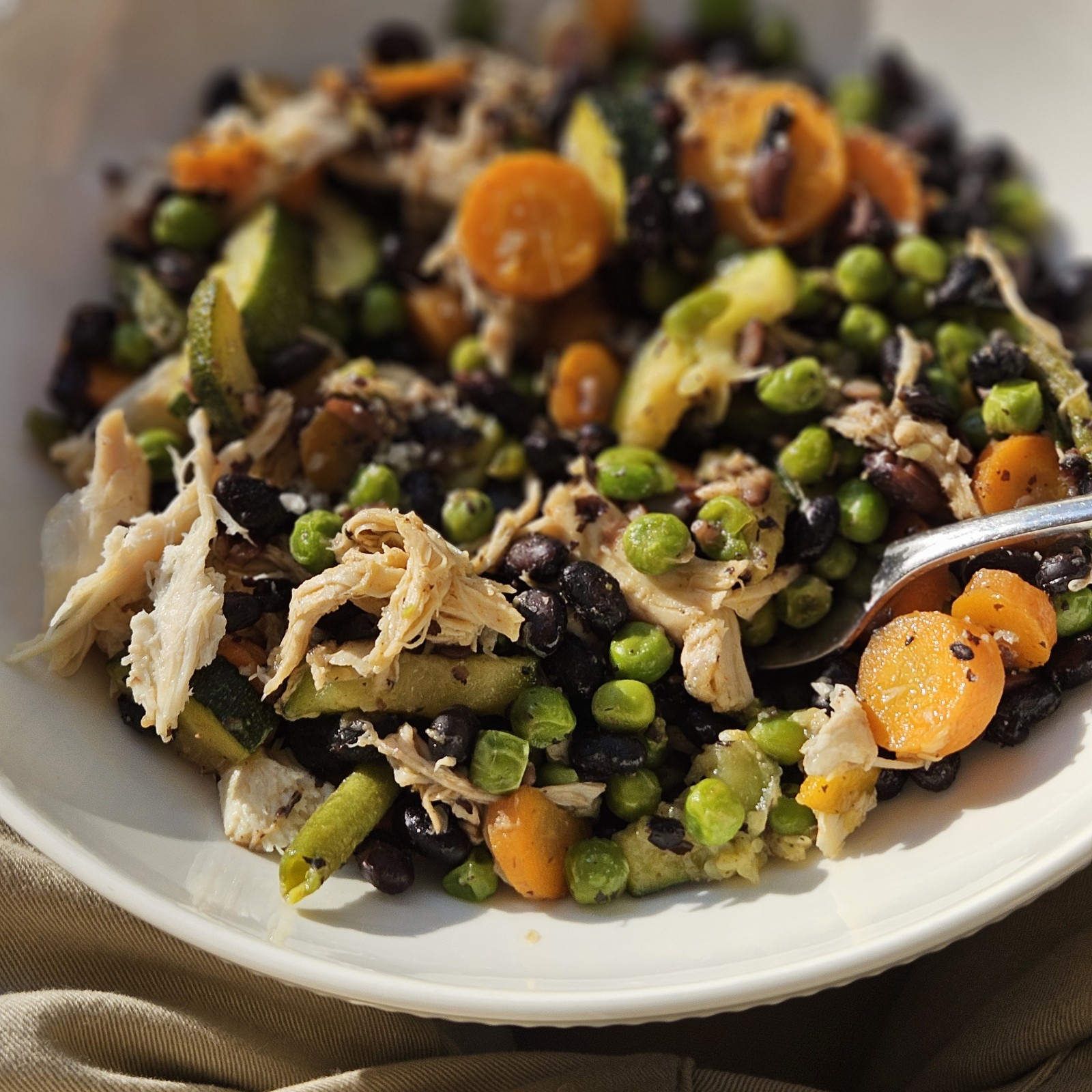
If you ever need an idea for leftover chicken this one is quick, easy and delicious..oh and super nutritious too!
What you'll need:
2 cups leftover chicken shredded or chopped
2 cups black beans (cooked or canned and rinsed)
2 cups assorted seasonal veggies chopped (it's summer so I'm using zucchini, carrots, green beans and peas)
2 Tbs chicken broth
2 cloves fresh garlic pressed
Butter, olive oil or both
Salt, pepper and your favorite spices
Heat a large cast iron or stainless steel skillet .Add butter or olive oil and cook the veggies until tender. Add garlic and saute 1 minute.
Add black beans and chicken, 2 TBS chicken broth, salt, pepper and spices as desired. Cook a few minutes until flavors meld.
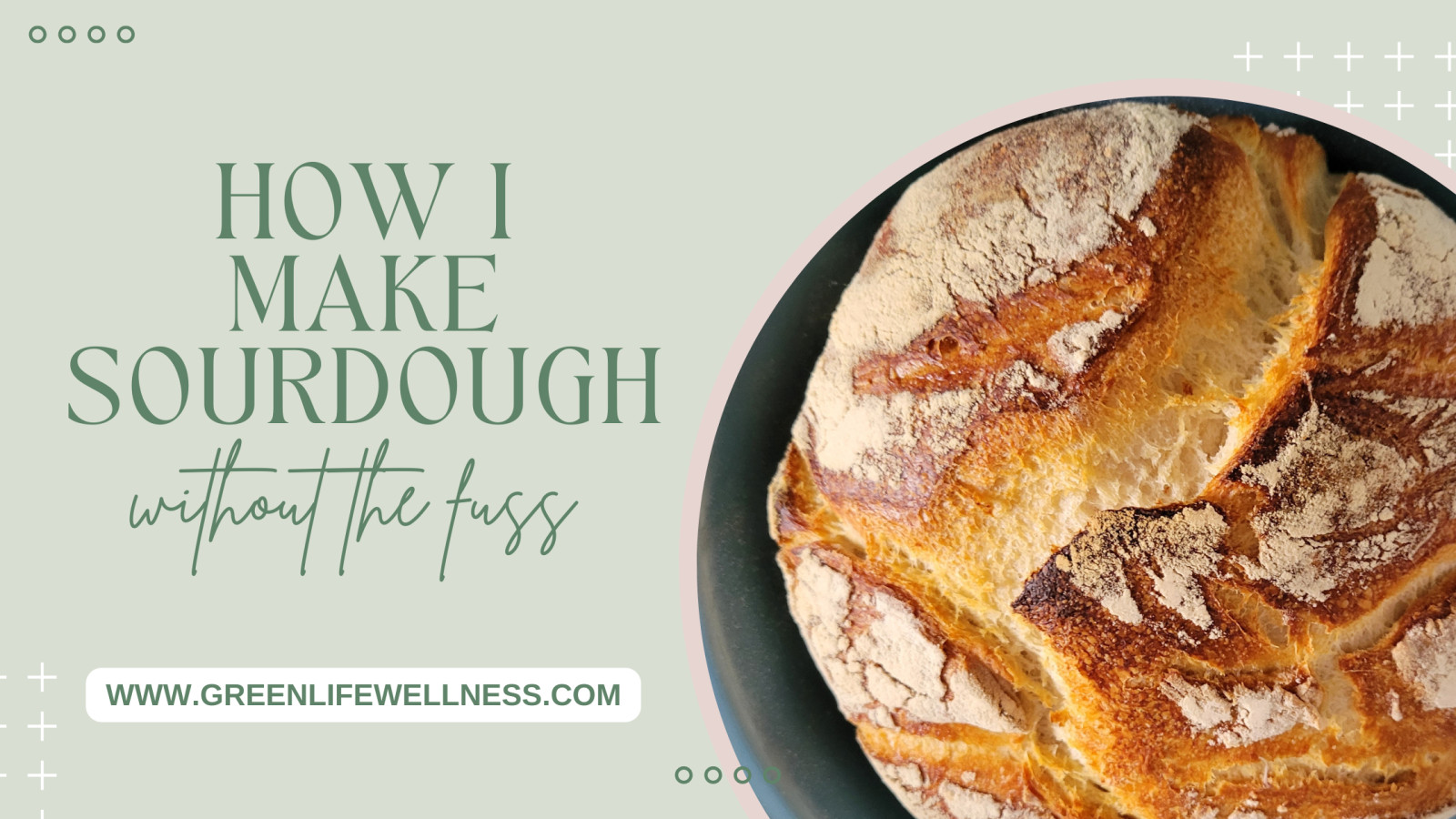
How I Make Sourdough Bread (Without the Fuss)
If you’re new to baking sourdough or just looking for a simple rhythm that fits into your busy life, you’re in the right place. My method is relaxed, approachable, and lets the dough do most of the work while you sleep. Evening prep, overnight rise, morning bake—it’s that easy.
But before we dive into the method, let’s cover a few important basics that make all the difference:
🥣 Use the Right Bowl
Sourdough is naturally acidic and doesn't play well with metal. Using metal bowls (especially reactive metals like aluminum) can weaken your starter and affect fermentation. Always choose glass, ceramic, or food-grade plastic (though I personally stick with glass or ceramic for peace of mind).
🌡️ Ideal Room Temperature for Fermentation
Your dough needs a cozy environment. The ideal temperature for bulk fermentation is between 70–75°F (21–24°C). If your home is chilly, consider placing the bowl inside the oven (turned off) with just the light on or near a warm appliance to help it rise steadily.
🫙 How to Know If Your Starter Is Active
A strong, active starter is key to a great loaf. I take mine out of the fridge in the morning, feed it (usually equal parts flour and water by weight), and let it rise throughout the day. By evening, it’s airy, bubbly, and pleasantly tangy.
Tip: A healthy starter should double in size within 4–6 hours of feeding and pass the float test—a spoonful of starter should float in water. If it sinks, it’s not quite ready yet.
🌾 Why Sourdough Is Easier to Digest (Even for Some with Gluten Sensitivity)
One of the most surprising benefits of sourdough is that many people with mild gluten sensitivity find they can tolerate it, even though it's made with wheat flour. Here's why:
- The long fermentation process breaks down much of the gluten, making it easier to digest.
- It also reduces phytates, which improves mineral absorption.
- The naturally occurring lactic acid bacteria help pre-digest the flour and can support gut health.
- Sourdough has a lower glycemic index compared to conventional breads, meaning it won’t spike blood sugar as quickly.
Note: This doesn’t apply to celiac disease—sourdough still contains gluten unless made with gluten-free flour and a separate starter.
My Go-To Sourdough Bread Metho
Ingredients:
- ¼ cup active sourdough starter
- 2 ⅔ cups (640 ml) lukewarm water
- 1 tsp sea salt
- 4 ¼ cups (510 g) bread flour or all-purpose flour
Instructions:
- Mix
In a large ceramic or glass bowl, combine the active starter with lukewarm water. Stir to dissolve. Add the flour and salt, and mix by hand or with a dough whisk until no dry bits remain. Dough will be shaggy and sticky. Cover with a clean, damp tea towel, and let it rest for 10 minutes (autolyse). - Stretch & Fold
Perform a set of stretch and folds: reach under the dough, stretch one side up, and fold it over. Turn the bowl and repeat 4–5 times. This gently develops gluten without kneading. - Bulk Fermentation
Cover the bowl with a damp tea towel or plate and let it sit at room temperature overnight (8–12 hours). By morning, it should have doubled, look domed, and feel soft and jiggly when you nudge the bowl. - Shape
In the morning, turn the dough out onto a lightly floured surface. Use a bench scraper to help if needed. Stretch and fold again briefly, then shape into a round (boule). Place seam-side up into a bowl lined with a floured tea towel (this is your proofing basket or banneton). Let rise for about 1 hour. - Preheat & Prepare
While the dough is proofing, preheat your oven to 400°F (204°C). Line a Dutch oven or baking dish with parchment paper. - Score & Bake
Carefully transfer the dough onto the parchment-lined baking dish. Use a lame or sharp knife to score a line down the center—this controls the expansion during baking. - Bake Covered
Cover and bake for 30 minutes. The cover traps steam, which helps the bread rise beautifully. - Uncover & Finish
Remove the lid and bake for another 30 minutes, or until the crust is golden brown and crisp. - Cool Completely
Transfer to a wire rack and let cool fully before slicing—this step allows the crumb to set and finish baking internally.
Final Thoughts
This method has become a peaceful evening ritual for me. Feed the starter in the morning, mix after dinner, and by sunrise, your home smells like a bakery. It’s wholesome, satisfying, and—despite its rustic look—surprisingly forgiving.
Sourdough may take a little longer than store-bought bread, but the nourishment it brings to both body and soul is well worth it.
If you give it a try, I’d love to hear how it goes!
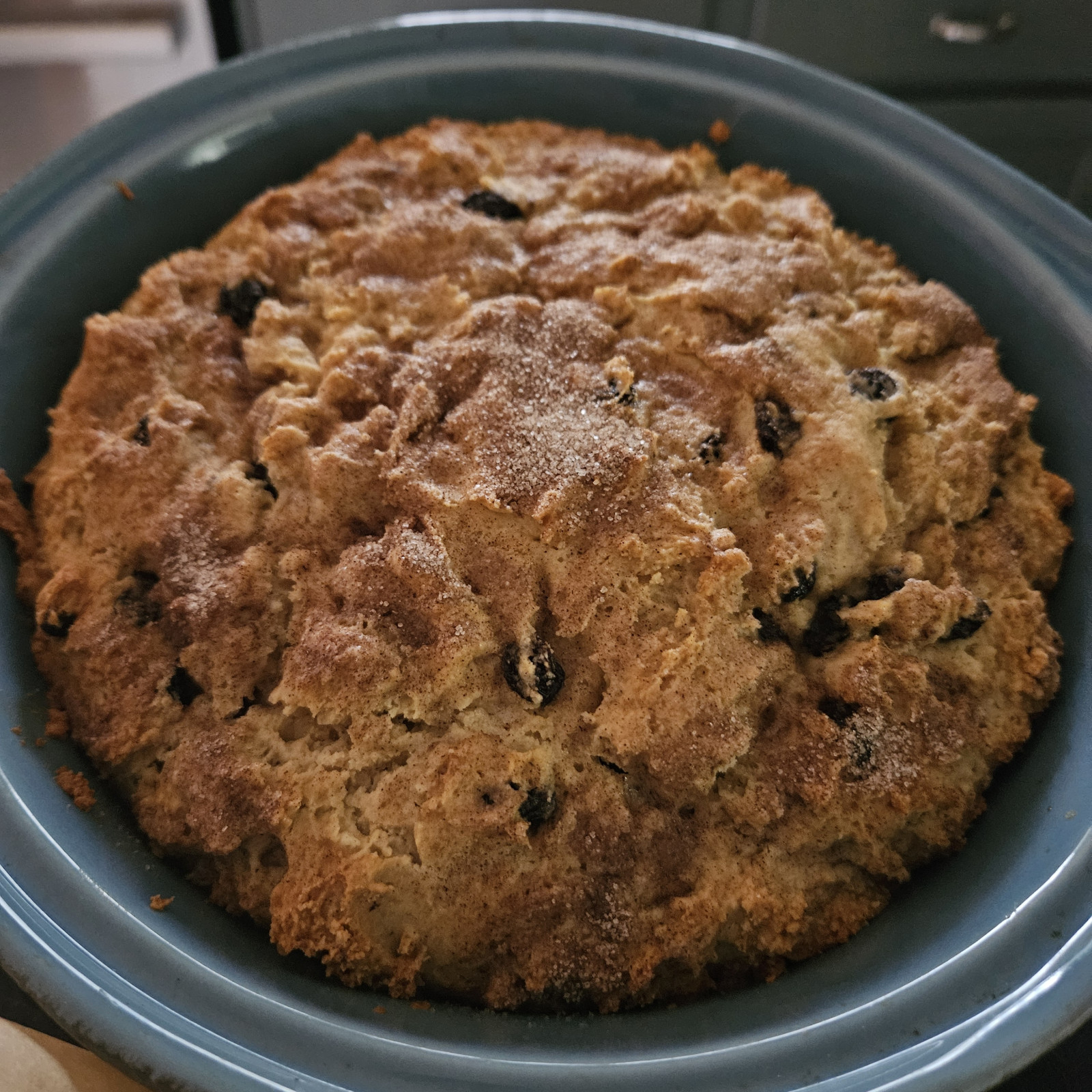
Truth be told I never liked Irish soda bread at least not until I went to work for a software company in New Jersey some 30 years ago and someone (wish I could remember who) brought in the most delicious, moist and sweet soda bread I had ever tasted.I was fortunate to get the recipe and made the bread for the very next St Patrick's Day dinner at my parent's house (somewhat afraid I might get ousted from my Irish heritage for not bringing the dry, crumbly, slightly stale version). My Dad, like me, loved it so much that he started making it regularly. In fact, the rest of the family came to know it as "Dad's Irish Soda bread" not realizing he had gotten the recipe from me. I was just happy that I got to introduce him to something that he had fun making and received lots of praise for. Everyone loved it and he was like a proud little kid every time he made one.As weird as it sounds I now realize that recipes, oddly enough are a way that we sort of immortalize ourselves. Here's what I mean: earlier today I made the beef stew that my first husband, Joe, had put in our newlywed recipe binder back in 1993 or 1994 (yes I'm that old) and of course seeing his handwriting brought back memories of him and our many adventures. I'm guessing that every time my Dad made that soda bread, following my hand written recipe he probably thought of me too.
Irish Soda Bread Recipe:
Ingredients:
- 1 cup raisins
- 1/2 stick melted butter
- 3/4 cup sugar
- 1 egg
- 1 1/2 cups buttermilk
- 3 cups flour (regular or gluten free)
- 1 tsp baking soda
- 2 tsp baking powder
- 1 tsp salt
- To make this recipe without sugar: use 1/2 cup pure maple syrup or honey and reduce buttermilk to 1 1/4 cups
Directions:
- Preheat oven to 350
- Plump raisins by boiling for 1 minute, then drain
- Cream together butter and sugar then add egg, raisins and buttermilk
- In a separate bowl combine flour, baking soda, baking powder and salt
- Add flour mixture into liquid mixture. It should be sticky and moist
- Bake for 1 hour (or until a tester comes out clean) in a round, stoneware pa
Remove from oven and dust with cinnamon sugar (this can also be done before baking if you want it to bake into the bread).
Let sit for 5 minutes before removing from pan.
Cinnamon sugar = 4 tbs sugar mixed with 1 tsp cinnamon (or more as you prefer)



